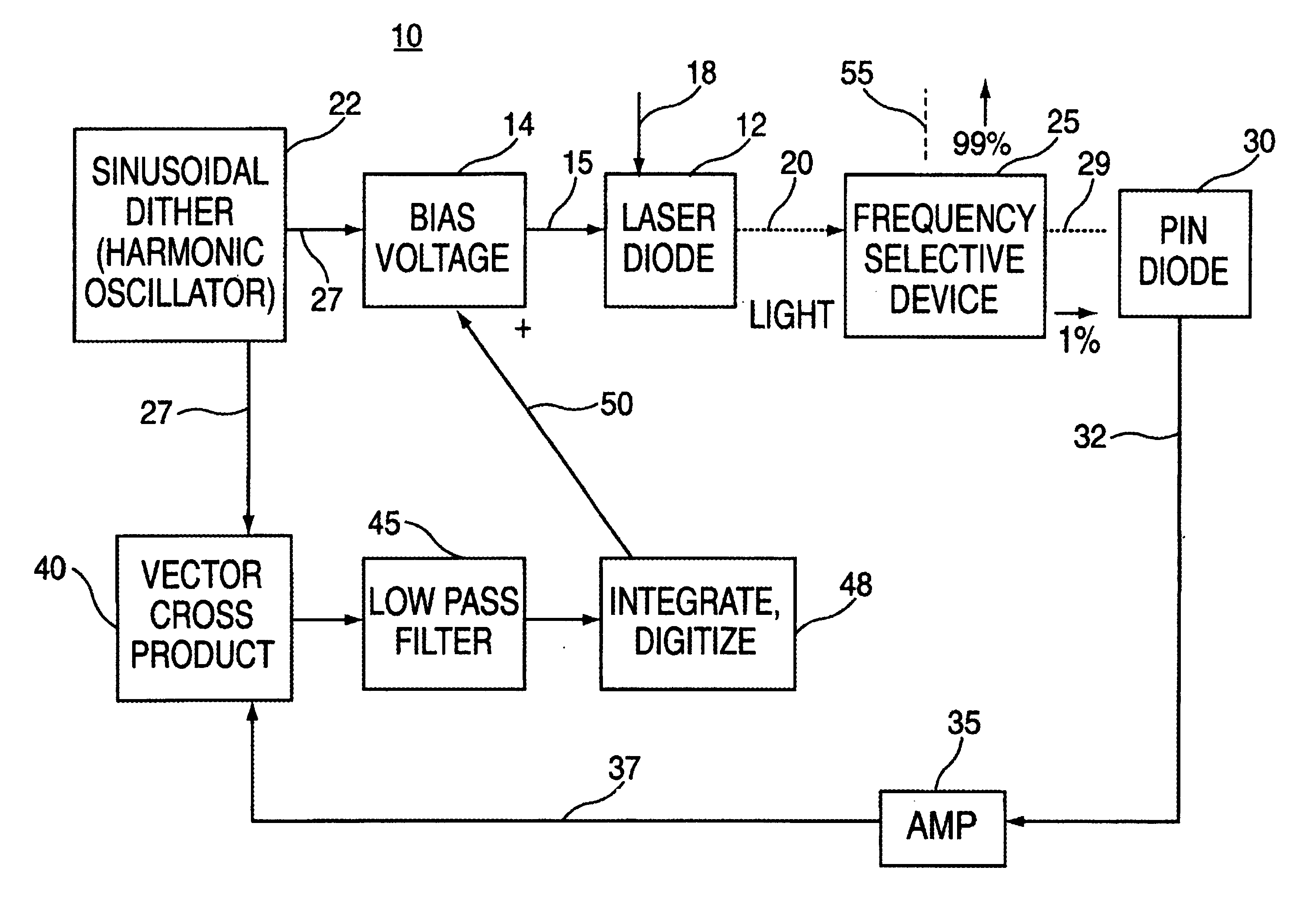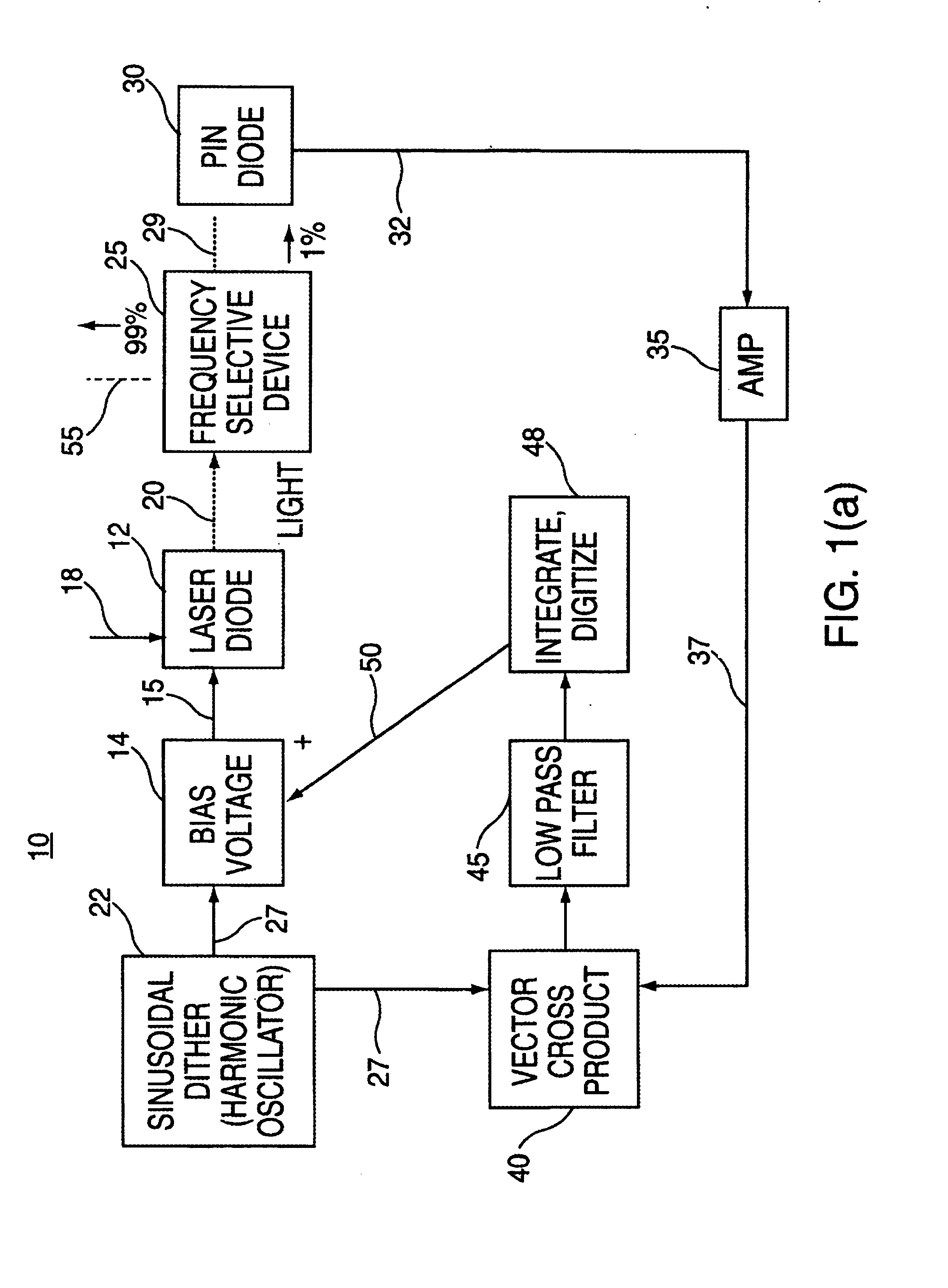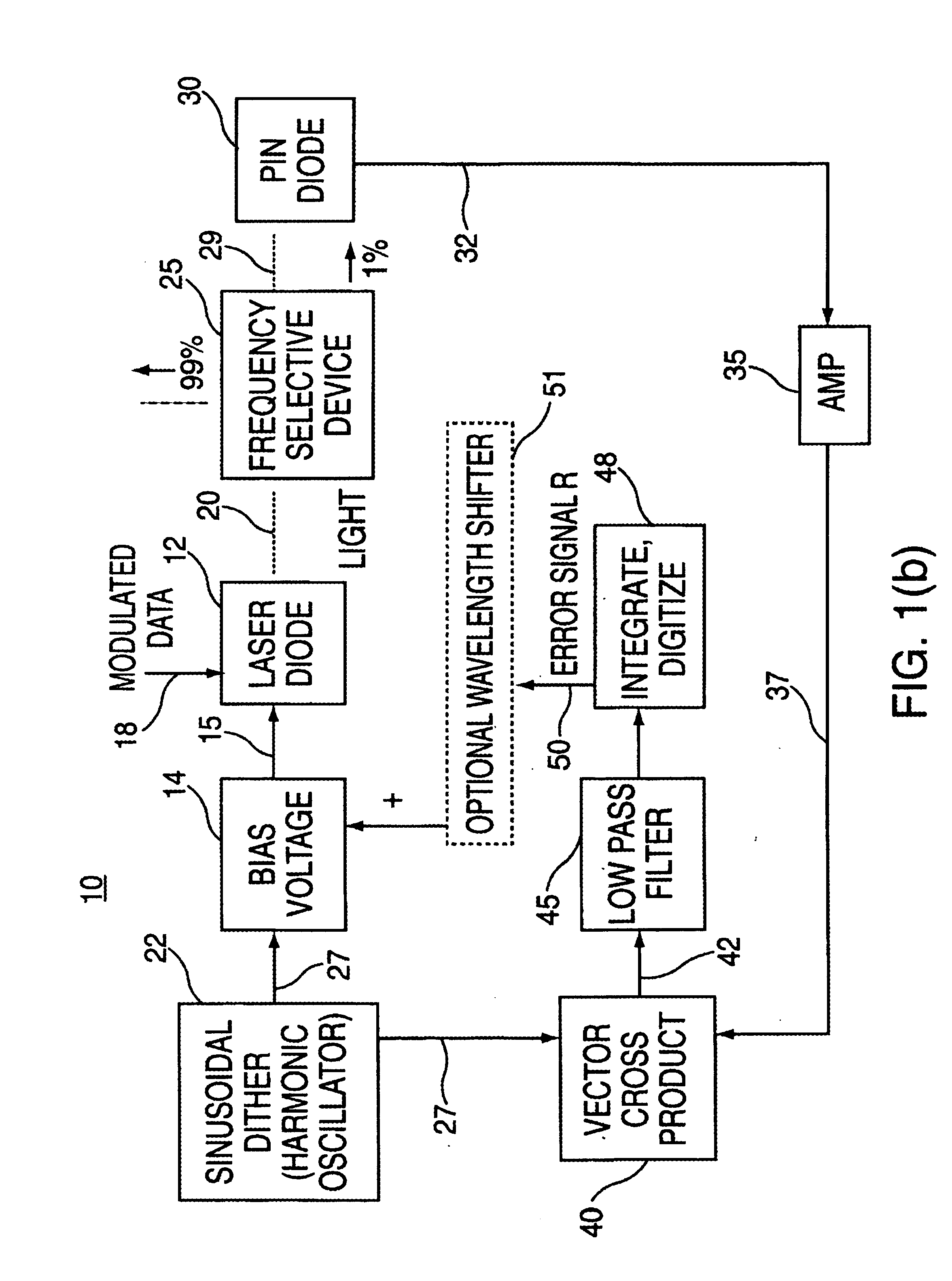Apparatus and method for wavelength-locked loops for systems and applications employing electromagnetic signals
a technology of electromagnetic signals and wavelengthlocked loops, applied in the field of electromagnetic signal apparatus and method, can solve the problems of inability to achieve the effect of reducing the number of laser devices, and affecting the efficiency of laser devices
- Summary
- Abstract
- Description
- Claims
- Application Information
AI Technical Summary
Benefits of technology
Problems solved by technology
Method used
Image
Examples
Embodiment Construction
[0032]The present invention is a novel servo-control system implemented for optical systems including light sources, such as lasers, and frequency selective devices, such as bandpass filters. The servo-control system, herein referred to as the “wavelength-locked loop” or “lambda-locked loop” (since the symbol lambda is commonly used to denote wavelength), implements a dither modulation to continuously adjust an electromagnetic signal source characterized as having a peaked frequency spectrum or peaked center wavelength, e.g., laser light, so as to track the center of a frequency selective device, e.g. a filter passband. In this manner, optimal power of the signal is transmitted and optimal use is made of the system transmission bandwidth.
[0033]The basic operating principle of the wavelength-locked loop (WLL) is now described with reference to FIG. 1(a), which depicts an example optical system 10 including a light source such as laser diode 12 driven with both a bias voltage 15 from ...
PUM
 Login to View More
Login to View More Abstract
Description
Claims
Application Information
 Login to View More
Login to View More - R&D
- Intellectual Property
- Life Sciences
- Materials
- Tech Scout
- Unparalleled Data Quality
- Higher Quality Content
- 60% Fewer Hallucinations
Browse by: Latest US Patents, China's latest patents, Technical Efficacy Thesaurus, Application Domain, Technology Topic, Popular Technical Reports.
© 2025 PatSnap. All rights reserved.Legal|Privacy policy|Modern Slavery Act Transparency Statement|Sitemap|About US| Contact US: help@patsnap.com



